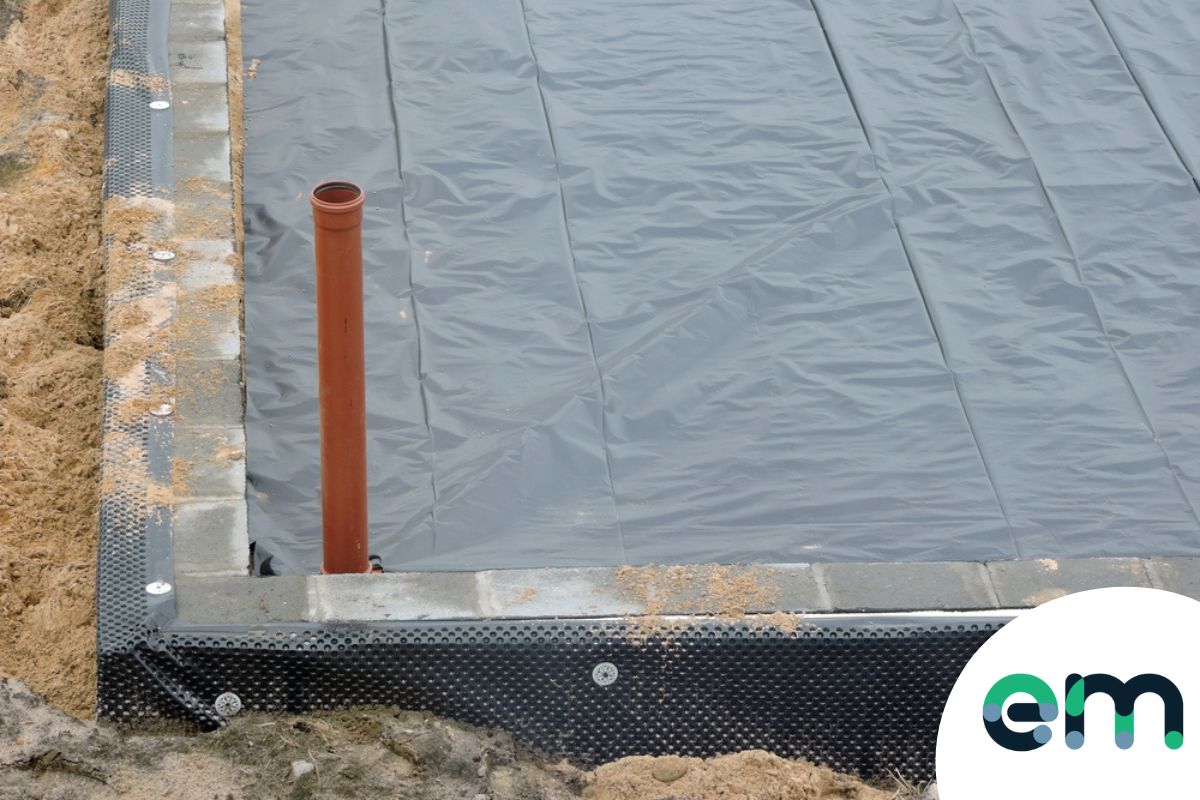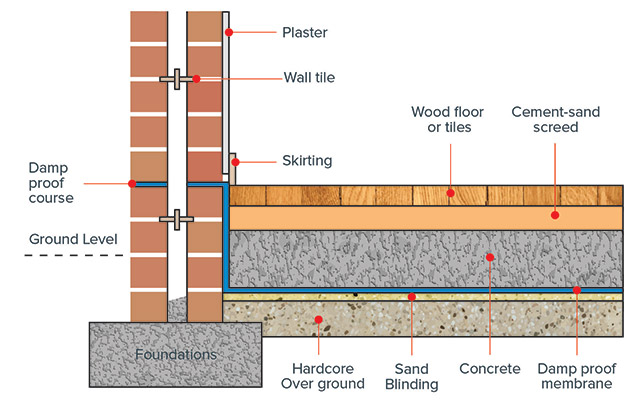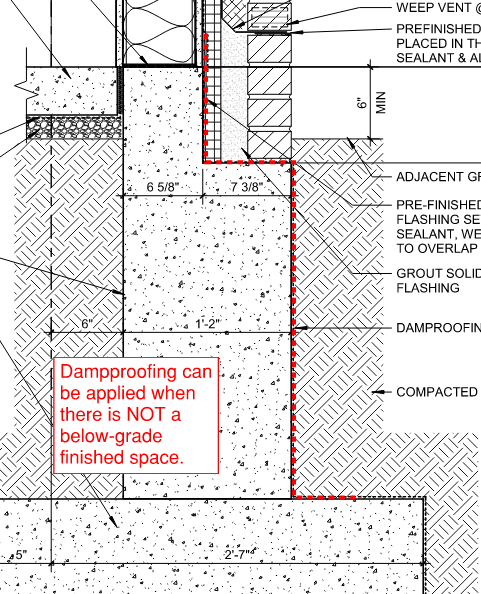Beginner’s guide to understanding rising damp and damp removal newcastle
Discovering the Numerous Methods and Solutions for Effective Damp Proofing
Wetness in structures presents substantial obstacles to both architectural stability and indoor air top quality. Various techniques and remedies have emerged to fight this prevalent concern. From standard damp-proof membrane layers to innovative chemical therapies, each method uses one-of-a-kind benefits. Understanding these options is essential for efficient moisture control. However, selecting the appropriate solution depends upon certain building conditions and needs, prompting further expedition into one of the most reliable damp proofing strategies offered.
Understanding the Reasons For Dampness
Although dampness can emerge from various sources, comprehending these reasons is essential for effective remediation. Commonly, moisture stems from 3 primary resources: increasing moist, permeating damp, and condensation. Increasing wet happens when groundwater travels up via porous products, such as brick or rock, frequently due to an absence of a reliable barrier (damp specialist newcastle). Penetrating moist is usually triggered by outside variables, consisting of roofing system leaks, faulty gutters, or damaged walls, allowing water to penetrate a building. Condensation, on the various other hand, results from excess wetness airborne, often intensified by poor air flow and temperature differences, leading to water droplets forming on surfaces. Identifying these underlying problems is vital, as each kind of moisture needs a tailored strategy for removal. Proper assessment assists in establishing one of the most reliable services, eventually protecting the architectural integrity of a structure and improving interior air high quality
Conventional Damp-Proof Membrane Layers

Chemical Damp-Proofing Solutions
Chemical damp-proofing remedies supply an ingenious method to protecting against dampness invasion in buildings. These approaches generally involve the application of liquid chemicals that penetrate stonework and form a barrier versus climbing damp. Commonly used chemicals include silanes, siloxanes, and other water-repellent agents that react with surface area materials to create a hydrophobic layer.The application procedure generally calls for exploration holes into the wall surfaces, infusing the chemical option, and permitting it to treat. This technique is particularly helpful for older structures where conventional damp-proof membrane layers may be not practical. Chemical damp-proofing can be less turbulent and much more economical than comprehensive improvement projects.While effective, these remedies depend on appropriate application and ecological conditions for peak performance. damp removal newcastle. Normal upkeep and tracking are vital to assure the longevity of the damp-proofing therapy. Overall, chemical damp-proofing represents a versatile choice for securing structures against moisture-related damages
Dental Caries Wall Surface Building And Construction Techniques
Cavity wall construction strategies offer countless benefits, specifically in wetness control and energy performance. By incorporating an air void in between 2 layers of masonry, these walls efficiently reduce water ingress while improving insulation. This combination not only protects frameworks from dampness yet additionally adds to decreased energy consumption.
Benefits of Cavity Wall Surfaces
When thinking about effective moist proofing techniques, the advantages of tooth cavity walls attract attention plainly. Cavity wall surfaces contain 2 separate layers, producing an air void that effectively minimizes moisture infiltration. This style lessens the danger of wetness, as the external wall serves as an obstacle versus rainfall and water ingress. Additionally, cavity walls enhance thermal insulation, which adds to energy performance by decreasing heat loss. They also supply audio insulation, helping to create a quieter interior setting. The air void enables for ventilation, which helps in moisture control and reduces the chance of mold development. These advantages not just boost the general comfort of a building yet additionally add to its long life and architectural honesty.
Wetness Control Techniques
Efficient moisture control approaches are critical in tooth cavity wall surface building to guarantee long-lasting protection versus dampness. One key method entails the consolidation of weep openings, which assist in water drainage from the tooth cavity, preventing buildup. Additionally, using get more info breathable membranes can assist take care of wetness degrees while enabling caught vapor to leave. Correct positioning of insulation is additionally crucial, as it ought to not obstruct drain paths. Guaranteeing that the outer fallen leaves of the dental caries wall are constructed with water-resistant materials improves total durability. Regular maintenance checks are vital to identify any type of obstructions or damages early, securing the framework's honesty. Inevitably, a mix of these strategies creates a durable protection against moisture invasion in tooth cavity wall surfaces.
Insulation and Power Performance
Insulation plays a crucial function in improving power efficiency within tooth cavity wall building. By integrating shielding products, these wall surfaces create a thermal barrier that minimizes warmth loss and decreases energy consumption. Reliable insulation not only helps preserve a steady indoor temperature level yet additionally alleviates the danger of dampness, as it prevents condensation within the wall surface tooth cavity. Different techniques, such as the use of rigid foam boards or mineral woollen, can be utilized to accomplish perfect insulation performance. Additionally, correct setup is vital to guarantee that spaces and voids are decreased, which can otherwise endanger energy efficiency. Eventually, a well-insulated dental caries wall adds considerably to overall sustainability and decreases heating & cooling expenses for property owners.
Exterior Damp Proofing Approaches
Outside damp proofing approaches are necessary for safeguarding structures from wetness infiltration. 2 efficient techniques consist of the application of waterproof membrane layers and the setup of French drains pipes. These options help alleviate water accumulation and maintain the stability of structures.
Waterproof Membrane Application
While numerous techniques exist for preventing wetness ingress, the application of water resistant membranes stays a highly efficient exterior moist proofing strategy. These membranes are usually made from products such as polyethylene, rubber, or customized asphalt, offering a durable barrier against water infiltration. The installation procedure entails applying the membrane to the external surface areas of wall surfaces or foundations, making sure total protection to avoid leakages. Proper attachment and securing at joints are essential to maximizing efficiency. Water resistant membrane layers can be used in different types, including liquid finishings and sheet membrane layers, enabling flexibility based on the specific requirements of the structure. This method not only protects buildings from wetness yet also boosts their longevity and architectural honesty.
French Drainpipe Installment
One reliable technique for handling groundwater and stopping moisture accumulation around a building's structure is the installment of a French drainpipe. This water drainage system consists of a trench loaded with gravel and a perforated pipe that reroutes surface water far from the foundation. Appropriate installation requires cautious planning, making certain that the drainpipe inclines far from the structure to promote perfect water flow. In addition, the area of the drainpipe is crucial; it needs to be placed in areas prone to merging or excess wetness. Routine maintenance, consisting of cleaning particles from the crushed rock and ensuring the pipeline stays unobstructed, is essential for lasting efficiency. Ultimately, a well-installed French drainpipe can significantly lower the danger of water-related concerns in structures and cellars.
Interior Waterproofing Strategies
Inside waterproofing approaches are crucial for safeguarding a structure's inside from moisture infiltration and possible water damage. These approaches usually entail the application of specific products and techniques created to create a dampness barrier within the structure. One typical approach is using waterproof layers or sealants on wall surfaces and floors, which avoid dampness from permeating surfaces.Additionally, mounting interior water drainage systems, such as sump pumps, can efficiently take care of water accumulation in cellars and crawl areas. An additional method includes using vapor obstacles, which are set up to hinder moisture motion from the ground into living spaces.Moreover, attending to any splits or gaps in walls or structures with proper sealers guarantees a detailed defense against water breach. By implementing these interior waterproofing strategies, property owners can significantly decrease the danger of mold and mildew development, architectural damage, and various other moisture-related issues. Appropriate execution of these methods is important for lasting defense and building stability.
Normal Maintenance and Evaluation Practices
Routine maintenance and assessment practices are crucial for assuring the lasting effectiveness of damp proofing remedies in any type of structure. Routine checks allow residential property proprietors to determine very early indications of moisture breach, such as peeling off paint, mold and mildew growth, and moldy odors. These signs can signal underlying issues that call for instant attention.Inspections ought to be conducted a minimum of each year, concentrating on vulnerable locations like basements, crawl areas, and outside walls. During these assessments, homeowner should analyze sealers, drain systems, and air flow to confirm they function correctly.Additionally, keeping downspouts and gutters is essential, as clogged systems can cause water accumulation near the foundation. Implementing a normal maintenance timetable, together with prompt repair services, can considerably expand the life expectancy of damp proofing actions and secure the architectural integrity of the structure. Proactive actions eventually add to the general health and wellness of the living atmosphere.
Frequently Asked Concerns
Just How Long Does Damp Proofing Usually Last?
The period of wet proofing performance varies, typically lasting in between 20 to half a century. Elements such as application top quality, environmental problems, and maintenance techniques considerably affect the durability of the wet proofing treatment.

Can I Damp Evidence My Home Myself?
The specific pondered the expediency of DIY damp proofing. With proper research and the right products, it is feasible. Nonetheless, they likewise recognized the importance of specialist advice to ensure lasting effectiveness and prevent future concerns.
What Are the Indications of Ineffective Damp Proofing?
Indicators of inefficient damp proofing consist of persistent stuffy smells, visible mold and mildew growth, peeling off paint, damp spots on wall surfaces, and wood decay - damp proofing newcastle. Homeowners ought to resolve these issues without delay to protect against further damage and health and wellness problems
Does Damp Proofing Affect Indoor Air High Quality?

Just How Much Does Professional Damp Proofing Cost?
Professional moist proofing prices vary substantially, usually varying from $1,000 to $5,000 depending on the residential property's size, the degree of the wet issue, and selected approaches. Each situation needs a customized evaluation for exact rates. Typically, wetness stems from three main resources: climbing damp, permeating moist, and condensation. When considering effective moist proofing techniques, the benefits of cavity walls stand out plainly. Exterior wet proofing methods are vital for shielding structures from moisture infiltration. While numerous methods exist for avoiding dampness access, the application of waterproof membranes continues to be a highly effective external damp proofing technique. Indications of inadequate wet proofing consist of relentless stuffy smells, noticeable mold and mildew growth, peeling off paint, wet patches on walls, and wood decay.